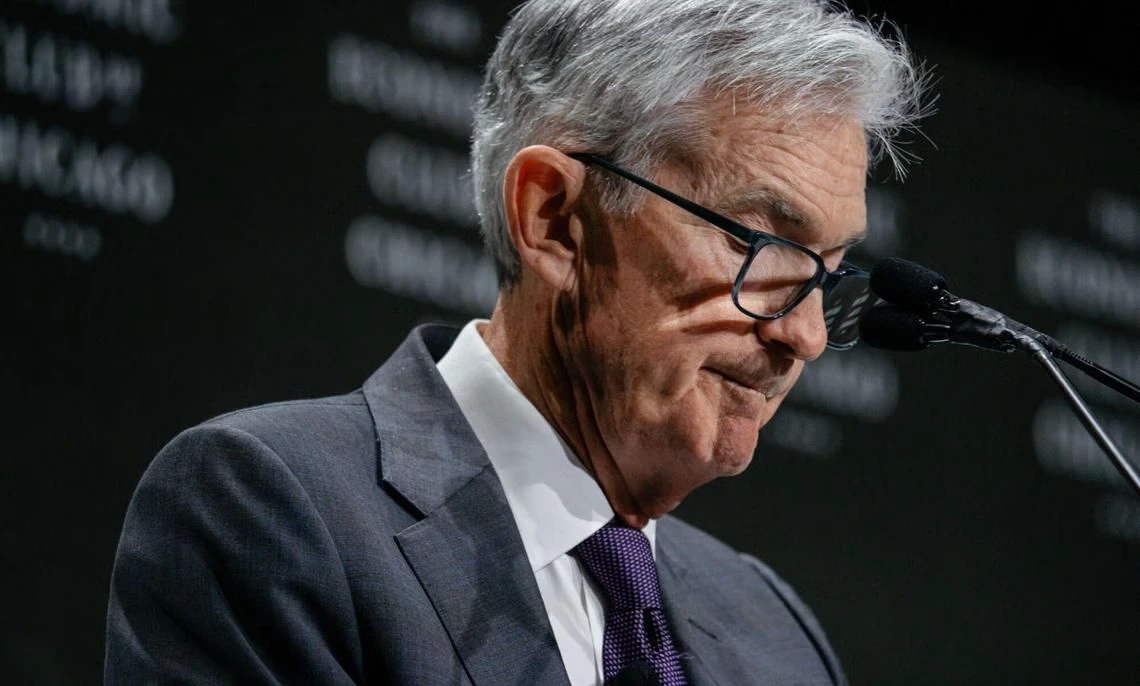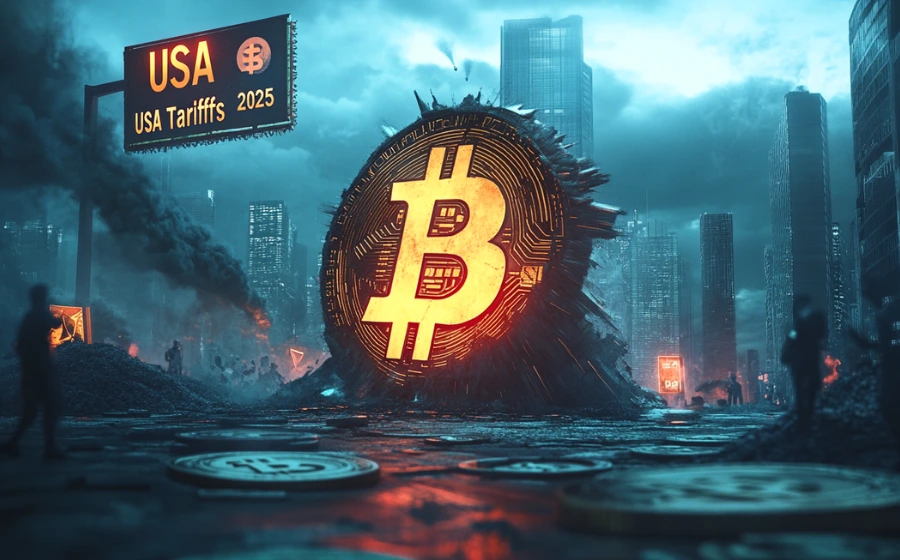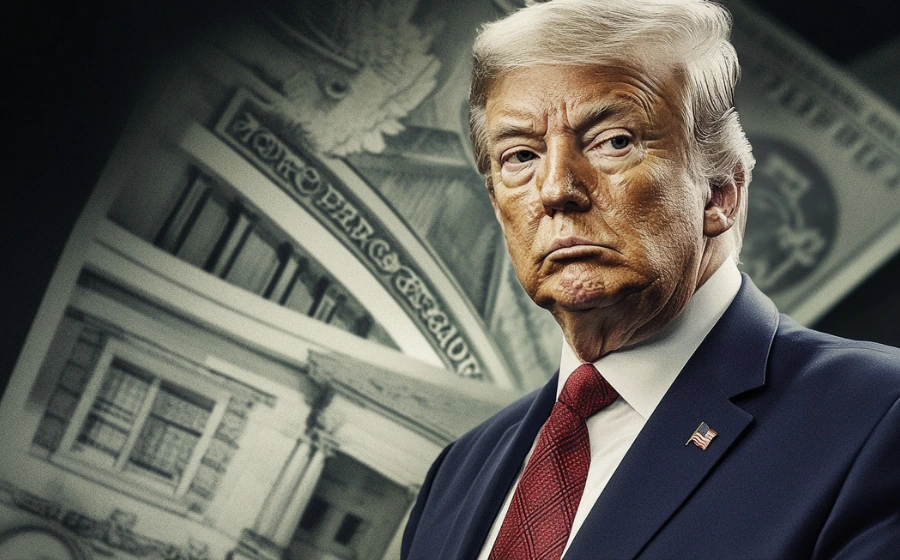
KEYTAKEAWAYS
-
Powell’s hawkish stance signals extended high interest rates, pressuring crypto markets amid rising inflation and trade uncertainties.
-
Investors shift from crypto to safe assets like gold and USD due to economic uncertainty and potential political interference with the Fed.
-
Long-term, decentralized assets like Bitcoin may gain appeal as protection against inflation, central bank risks, and political instability.

CONTENT
On April 16, 2025, Federal Reserve Chair Jerome Powell gave a speech at the Economic Club of Chicago titled “Economic Outlook.” He shared views on the U.S. economy, monetary policy, and the effects of the Trump administration’s tariff policies.
Powell’s hawkish tone and continued high interest rate policy caught the market’s attention, especially in relation to high-risk assets like cryptocurrencies. This article looks at how Powell’s comments may affect the crypto market in the short and long term and provides insights for investors.
KEY POINTS FROM POWELL’S SPEECH
Powell spoke about the economy, monetary policy, and external risks. These are the most important points related to the crypto market:
1.Hawkish monetary policy:
Powell said the current federal funds rate (4.25%-4.5%) will remain steady. He ruled out any big interest rate cuts soon. The Fed will only cut rates if inflation drops clearly or if the job market weakens. High interest rates usually hurt risk assets like crypto by reducing market liquidity and increasing opportunity costs for investors.
2.Tariffs and inflation risks:
Powell warned that new tariffs from the Trump administration (20% on the EU, 46% on Vietnam) may raise inflation and slow down economic growth. Higher inflation could delay rate cuts or even bring back rate hikes, creating more uncertainty in the market.

3.Economic uncertainty:
He said the U.S. economy is facing “unusually high” uncertainty. Tariffs could cause prices to rise and growth to slow. In this situation, investors may move away from risky assets like crypto and choose safer options such as gold or the U.S. dollar.
4.Fed independence and political pressure:
Trump has openly criticized Powell and may even try to replace him. This creates concern about the Fed’s independence, which could increase volatility in the crypto market and other risk assets.
FED POLICY’S IMPACT ON CRYPTO
The Fed’s decisions affect the crypto market in different ways over time.
1. SHORT-TERM (1–3 MONTHS): HIGH RATES AND RISK-OFF MOOD
Powell’s hawkish message means high interest rates will stay. This is bad for crypto, which doesn’t generate income like bonds or savings. Investors may sell crypto to reduce risk.
For example, during the 2022 rate hike cycle, Bitcoin dropped from $69,000 to $16,000.
Also, tariffs and inflation fears may lower market confidence. Powell’s concerns about slower growth could push more money into safe assets. On social media (like X), traders expect Bitcoin to test support levels around $85,000–$88,000 soon, with higher volatility.
2. MEDIUM-TERM (3–12 MONTHS): INFLATION VS. RECESSION
Tariffs may cause inflation. In that case, some investors might buy Bitcoin as a hedge—similar to what happened during COVID in 2020.
But if inflation comes with a recession, investors may prefer traditional safe havens like gold or cash over crypto.
Higher costs from tariffs may also reduce investment in the tech and blockchain space, affecting growth in crypto ecosystems.
There is no clear view yet on the Fed’s future rate cuts. Traders expect only two cuts (25bps each) in 2025. Powell’s cautious tone makes early cuts less likely. If the U.S. avoids a deep recession and inflation stays high, Bitcoin could benefit. But if a recession hits, crypto may fall with the stock market.
3. LONG-TERM (1+ YEARS): GROWING APPEAL OF DECENTRALIZATION
Uncertainty about Fed policy and possible political interference (like Trump trying to replace Powell) could make decentralized systems like crypto more attractive. Some investors may see Bitcoin as a way to protect against central bank risk.
Also, the crypto space continues to grow through innovation and institutional adoption—like inflows into Bitcoin spot ETFs. This supports long-term strength. Even with short-term swings, crypto may gain value as a decentralized alternative in an unstable global economy.
MARKET REACTIONS
After Powell’s speech, crypto prices dropped. As of April 16, 2025:
- Bitcoin: ~$92,000, down about 3%
- Ethereum: down about 5%
-
U.S. stock markets also dropped:
- Dow Jones: -3.62%
- Nasdaq: -4.34%
- Gold rose, showing stronger demand for safe assets.
On social media, traders remain cautious in the short term. But many still believe in long-term growth, driven by the Bitcoin halving and continued institutional investment (e.g., from BlackRock, Fidelity). However, the uncertain Fed policy and trade tariffs could keep volatility high.
INVESTMENT ADVICE
Short-Term:
- Be cautious, reduce leverage
- Watch the $85,000–$88,000 Bitcoin support zone
- Monitor economic data (like inflation and jobs) and updates on tariffs
Medium-Term:
- If inflation stays high, consider holding some crypto like Bitcoin as a hedge
- Watch bond yields, the U.S. dollar index, and stock-crypto correlation
Long-Term:
- Focus on quality assets (Bitcoin, Ethereum)
- Take advantage of pullbacks to build long-term positions
- Follow updates on regulation and adoption trends
CONCLUSION
Powell’s April 16 speech highlights the Fed’s tough balancing act between high inflation, economic uncertainty, and political pressure. His hawkish tone and steady interest rate stance are short-term negatives for crypto. Tariffs could add more stress.
But long-term, the appeal of decentralized assets may grow as trust in central banks weakens. Investors should stay flexible, follow key data, and manage both risk and opportunity in this evolving market.
▶ Buy Crypto at Bitget
CoinRank x Bitget – Sign up & Trade to get $20!













